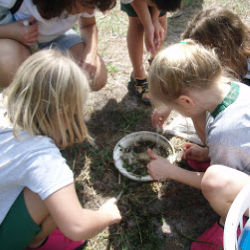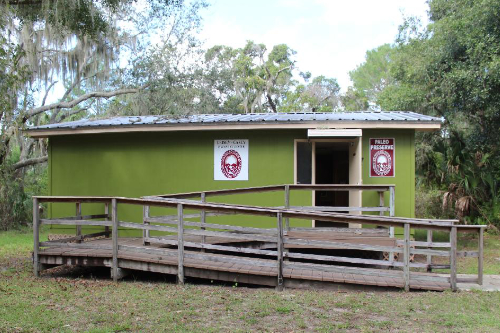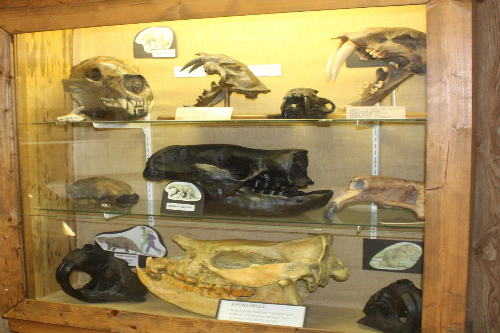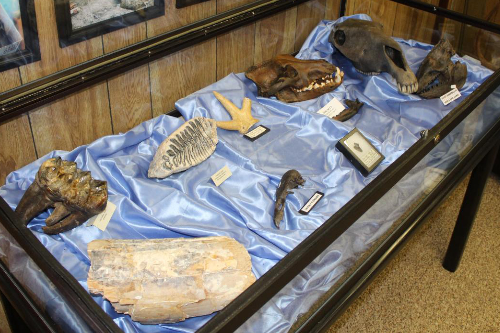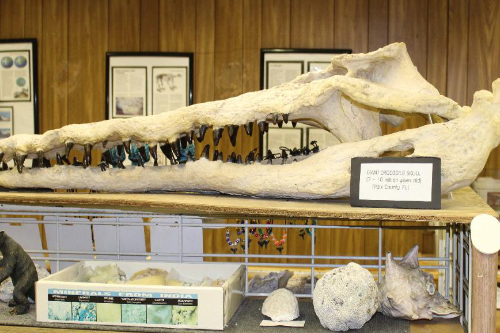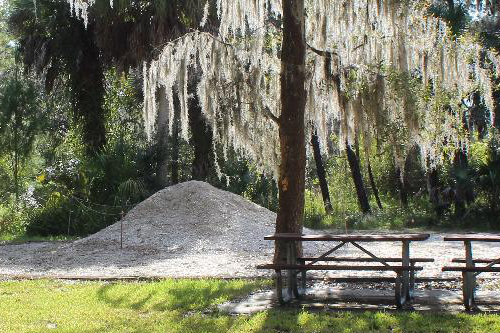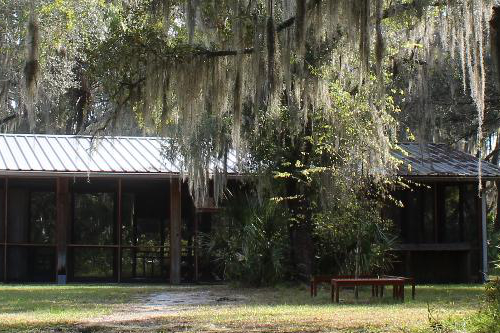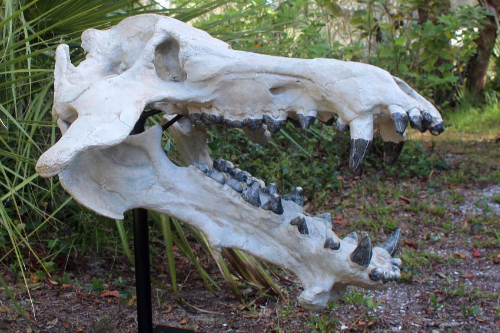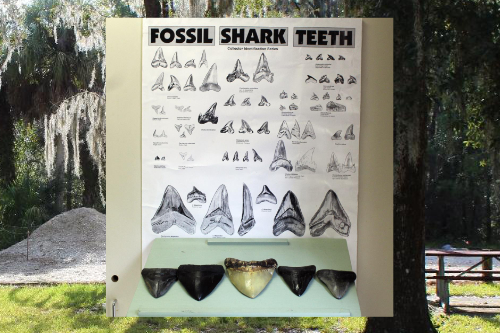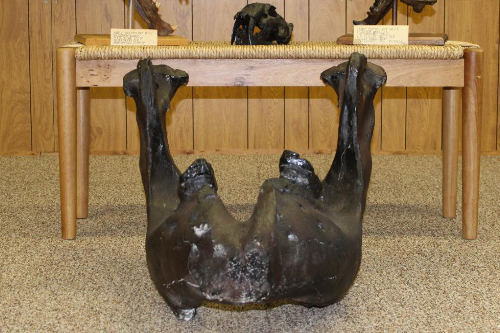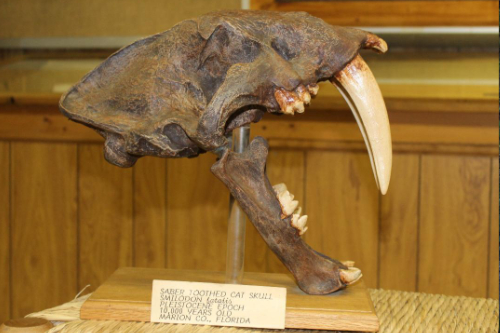Welcome to
Paleo Preserve
Imagine a gulf coast Florida far different
from the one you know. Vast grassland savannahs
stretch to the horizon, cut by teaming  rivulets.
Strange and exotic animals like saber cats, mastodons,
glyptodonts, and giant sloths roam the
landscape. Some thirty miles away, great white
sharks over fifty feet long cruise through the
Gulf. It’s almost two million years ago.
rivulets.
Strange and exotic animals like saber cats, mastodons,
glyptodonts, and giant sloths roam the
landscape. Some thirty miles away, great white
sharks over fifty feet long cruise through the
Gulf. It’s almost two million years ago.
In 1983, scientific history was changed
when the world’s greatest collection of Pleistocene
fossils was uncovered at the Leisey Shell Pit in
southern Hillsborough County.
Volunteers organized by Tampa Bay paleontologist Frank Garcia worked with scientists to expose scores of fantastic creatures from prehistoric times, some of them unknown to science dating from 1.6-1.0 million years ago!
Though the pit itself has long since
closed, many of the fossils 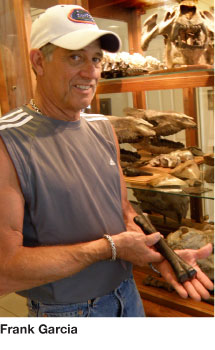 discovered
there, as well as photographs and articles from its
excavation years, are on display at the Paleo Preserve
Fossil Museum.
discovered
there, as well as photographs and articles from its
excavation years, are on display at the Paleo Preserve
Fossil Museum.
This small, nonprofit museum started by Frank Garcia
to keep alive the history of the Leisey Shell Pit
discovery continues to educate the public about
Florida’s amazing fossils!
The Preserve is unique in the study of
paleontology because it opens a window on the
creatures of the early ice age. It tells us what the
rest of Florida was like over the millennia as well.
Information for Visiting
Paleo Preserve Fossil Museum is open to the public on Saturdays, 9 am until 2 pm.
There is no charge for admission. An interactive experience is offered for schools and groups throughout the year.
The experience includes an onsite educational presentation, tour of the museums, and a hands-on dig in the fossil pit. Participants discover, collect, and keep the fossils they find.
To inquire about pricing, schedule a school trip or group visit, and for more information please contact Paleo using the form below.
Address
4140 24th Street SE
Ruskin, FL 33570
Directions from Tampa
Take I-75 south to exit #240B toward Ruskin. Go west
on Fl-674 about 1 mile and turn left (south) onto 24th
Street SE. Continue about 3 miles until the end
of 24th. Camp Bayou is on the left.
Paleo
Preserve Fossil Museum is located on the grounds of
Camp Bayou Nature Preserve.



